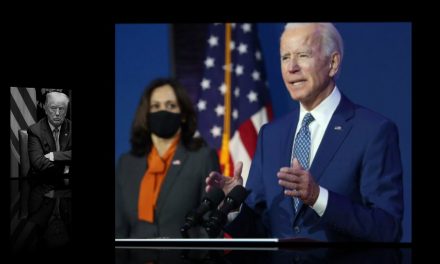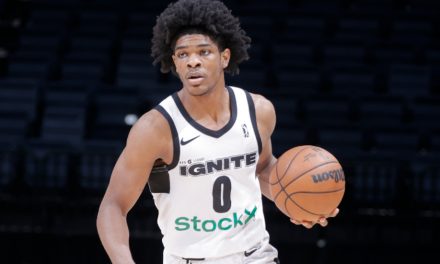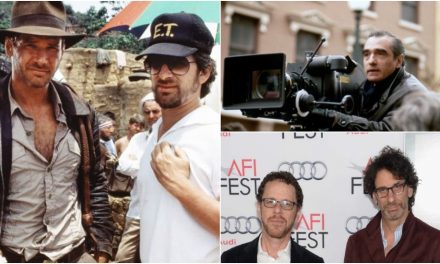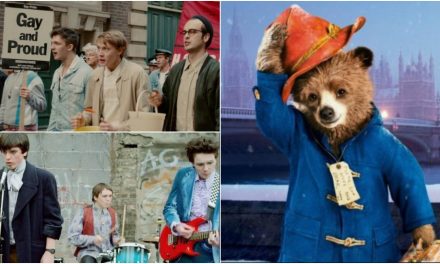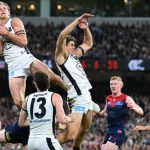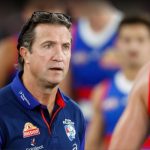Darius Garland will be in the final year of his rookie deal next season and will likely get a max extension. Photo: Cleveland Cavaliers
At the beginning of this NBA season, the Cleveland Cavaliers were generally thought of as an interesting team with some intriguing, if not quite developed, young talent.
By mid-season they were a media darling, occupying a top-four spot in the hyper-competitive Eastern Conference. Then, through a slew of injuries, especially to their guard rotation, the Cavs dropped into the play-in tournament and, eventually, out of the playoffs altogether.
Jasper of Simpsons fame sums up the Cavaliers season best:
Ultimately this season was a resounding positive for the Cavs. Darius Garland and Jarrett Allen earned their first All-Star selections – likely the first of many for Garland – and Evan Mobley was probably the clubhouse leader for Rookie of the Year before running out of steam late in the season.
Throw in the unlikely fit of Lauri Markkanen, the continued development of Isaac Okoro, Collin Sexton’s return and Caris LeVert containing to get accustomed to his new teammates, and this is without a doubt the best non-LeBron Cavaliers roster that we’ve seen since the turn of the millennium.
How do the Cavs build upon those foundations?
The roster
As mentioned above, the Cavs roster is in great shape. Their core is young, talented and – for the moment, at least – cheap.
That foundation of Garland, Allen and Mobley is as fine a starting place as any rebuilding team in the NBA currently holds. LeVert is just hitting his prime and Markkanen silenced the doubters as to how he would fit as a nominal small forward with a bounce-back campaign.
Even the more maligned players made solid contributions.
Isaac Okoro’s defence has been solid since he set foot on an NBA court; his shooting was his downfall as a rookie. This season he improved exponentially, draining an even 35 per cent of his three-point attempts, up from 29 per cent last season.
It wasn’t just catch-and-shoot opportunities, either (though they did come in far greater regularity). Okoro’s shooting on the move and off the dribble also showed signs of life. There is a very good player in there somewhere.
Cedi Osman is a lightning rod for Cavaliers fans criticisms, yet this season was perhaps the 27-year-old’s best. Despite playing fewer minutes than he has in any season since his rookie year, Osman settled into a niche as a Swiss Army knife on the second unit, playing as a scorer when needed, sometimes a distributor and throwing in career-best defence. His per-36 numbers were by far career-highs.
Finally, we come to Old Man River. Kevin Love is the final holdover from the Cavaliers’ 2016 championship-winning side. After moping around when the Cavs rebuild was in its infancy, Love found new life on a competitive team and was even talked about as a possible Sixth Man of the Year candidate at various stages of the season.
The foundations are set in Cleveland.
Team needs
There are two bleedingly obvious holes on the Cavaliers roster and both were prime reasons for the Cavs’ late season slide: back-up options for Garland and Allen.
With both All-Stars missing considerable time after the All-Star break, the Cavs went into freefall. Though injuries earlier in the season, specifically to Sexton and Ricky Rubio (traded to acquire LeVert), left the cupboard bare as far as ballhandling and playmaking go. To drive the point home, when you’re relying on 73-year-old Rajon Rondo for key minutes in a do-or-die contest, you’re in trouble.
Mobley moved to centre when Allen went down with a broken finger and it’s no coincidence that the rookie started to struggle from that point forward. At this stage of his development, he’s simply too slight to handle the physical work that is required of a centre. He’ll get there with time, but he’s still got a ways to go.
This is what makes the situation around Sexton so fascinating.
After a sterling 2021 season where he averaged 24.5 ppg, the 23-year-old only appeared in seven games this time around before suffering a season ending meniscus injury. Sexton is undoubtedly a talent, able to score practically at will against any defence. To this writer’s eye he flashes the occasional Allen Iverson vibe.
PLEASE HELP US CONTINUE TO THRIVE BY BECOMING AN OFFICIAL FOOTYOLOGY PATRON. JUST CLICK THIS LINK.
That said, his fit with Garland is highly questionable. It’s no accident that Garland flourished this season without Sexton taking touches away from him. Defensively a SexLand backcourt is flammable, both too short and too slight to impact the game at that end. Okoro is clearly a better fit and looks the long term 2-guard in Cleveland.
Given Sexton is a restricted free agent, there are a lot of questions that the Cavaliers front office needs to ask itself: can the SexLand backcourt work long term? If so, how much money is Sexton worth? If not, what’s his value on the trade market?
You can be certain that Sexton will receive an offer sheet or two this off-season. How the Cavs respond to that will be absorbing.
The cap sheet
As things stand the Cavs are right up against the salary cap but will have a little over $20 million under the luxury tax line. That figure includes the club’s expected exercising of team options on Dean Wade and Dylan Windler, but doesn’t include any offer to Sexton.
Garland will be in the final year of his rookie deal next season and will likely get a max extension, which will also cut heavily into the Cavs’ war chest.
They do have a pair of juicy expiring deals to offer, however, should they decide to clear cap space.
Love will be 34 years old at the start of next season, as his albatross of a deal finally comes to an end. It wouldn’t surprise this writer to see the veteran and his almost $29 million salary dealt to a contender for draft capital at the trade deadline.
LeVert will earn close to $19 million in the final season of his deal. Does his play merit that sort of money? Probably, though it’s certainly debatable. What isn’t debatable is LeVert’s availability.
Outside of a sophomore campaign where he played in 71 regular-season games, Levert has been a health risk his entire NBA career. This season’s 58 appearances is in fact his second most as a professional. If the Cavs believe they can make better use of that wedge, look for them to cut bait.
The draft
Between Mobley, Garland and even Okoro and Sexton, the Cavs have drafted well in recent years. For the first time since 2015 (the Cavs didn’t have first-round picks in 2017 or 2018) Cleveland will draft outside of the top 10, presenting a prime opportunity to grab a potential high-end role player that can dovetail with their existing building blocks.
As things stand, Cleveland will draft at pick 14, the final pick of the lottery, as well as holding a pair of second-rounders from San Antonio and Miami, which will fall at 39 and 58 respectively.
With that late lottery pick, Cleveland has two choices: find a back-up to Garland, or find a back-up to Allen. Given solid reserve centres are more plentiful than lead and/or combo guards, expect the Cavs to prioritise a guard.
They should look for somebody who can both play alongside Garland as well as assuming playmaking duties when he sits. This writer would focus on two players, in particular: Johnny Davis and Dyson Daniels.
Davis would have to slip a little to be on the board at 14, but would be an ideal fit on the Cavs. He’s a big guard who isn’t an elite athlete but has a well-developed feel for the game and seems ideally suited to being a secondary playmaker who can make life easier for Garland.
Daniels oozes potential. This writer has watched his career closely since his professional debut as a 16-year-old in his native Australia. He’s a magnificent athlete with the requisite size (6’6”, 200 pounds) to take defensive pressure away from Garland in a way that Sexton simply can’t. He’s a developing shooter but is already an astute distributor and an active defender.
To find more of Jarrod Prosser’s content visit vendettasportsmedia.com


